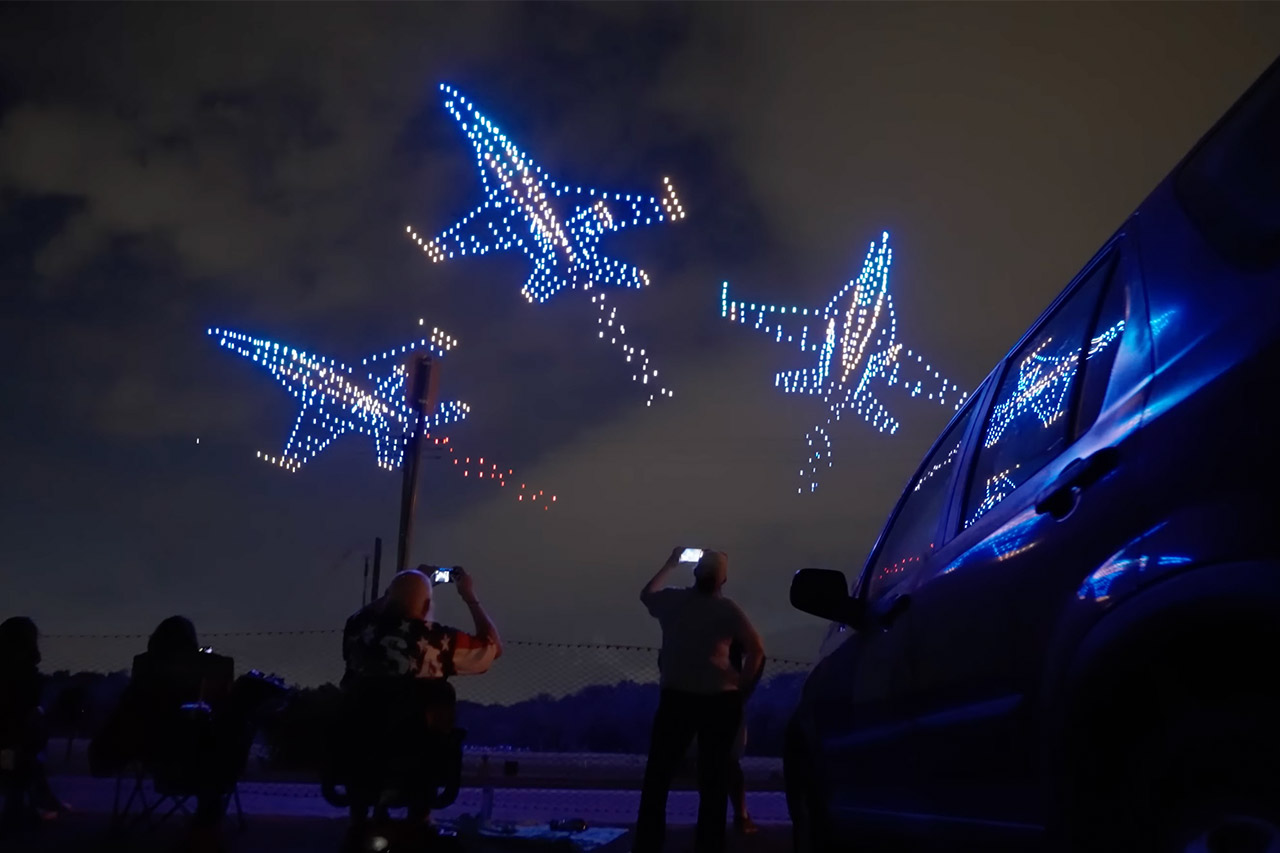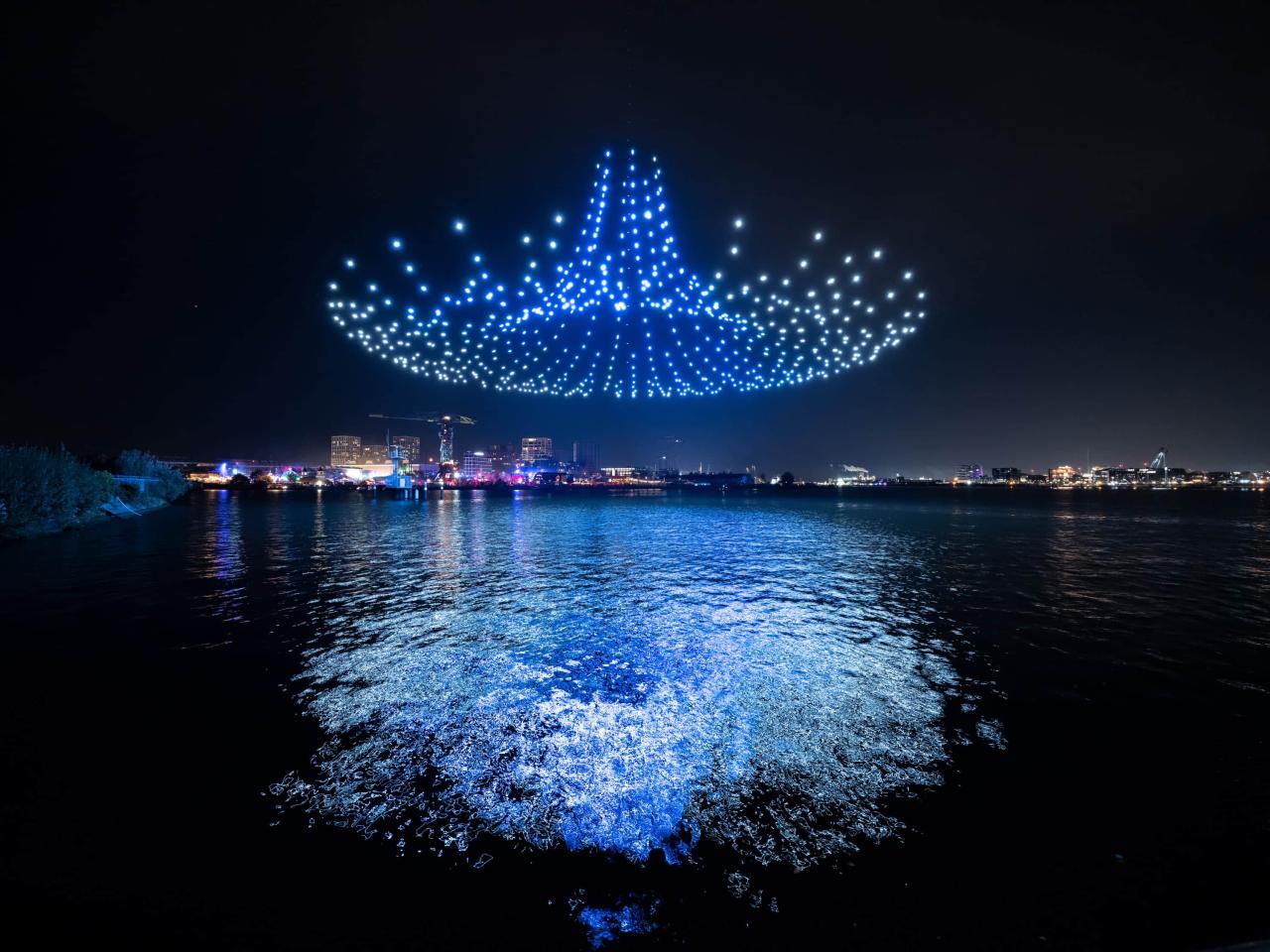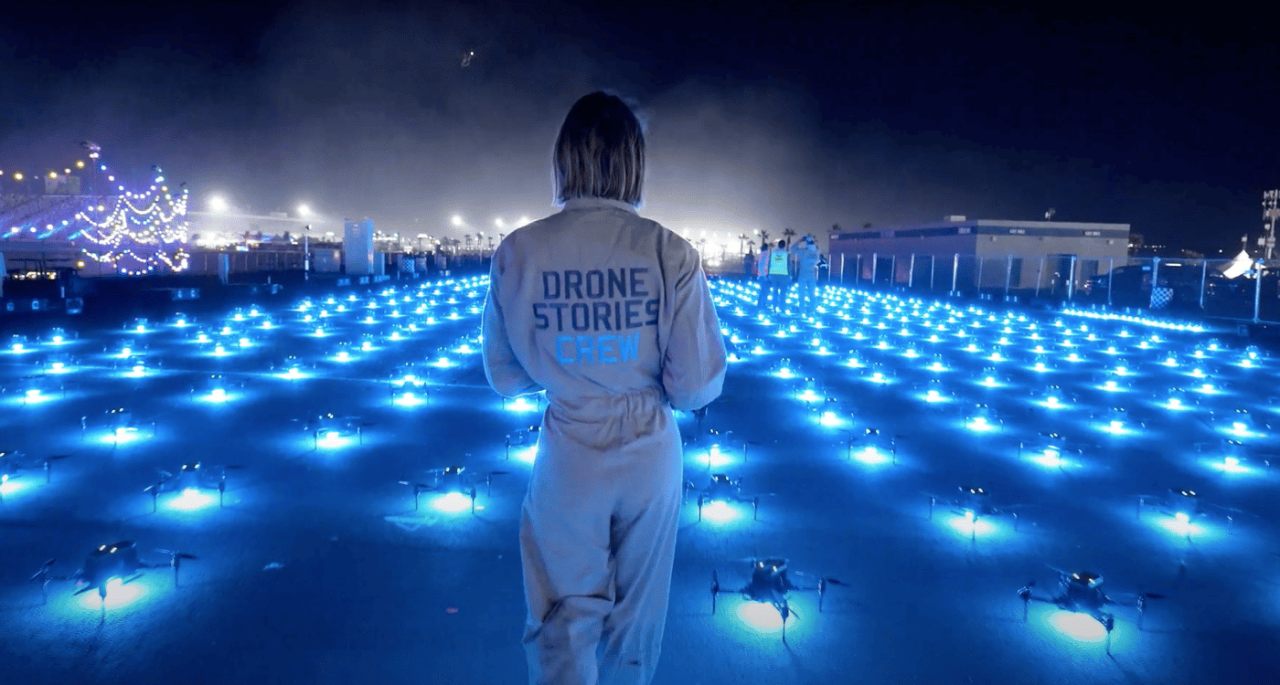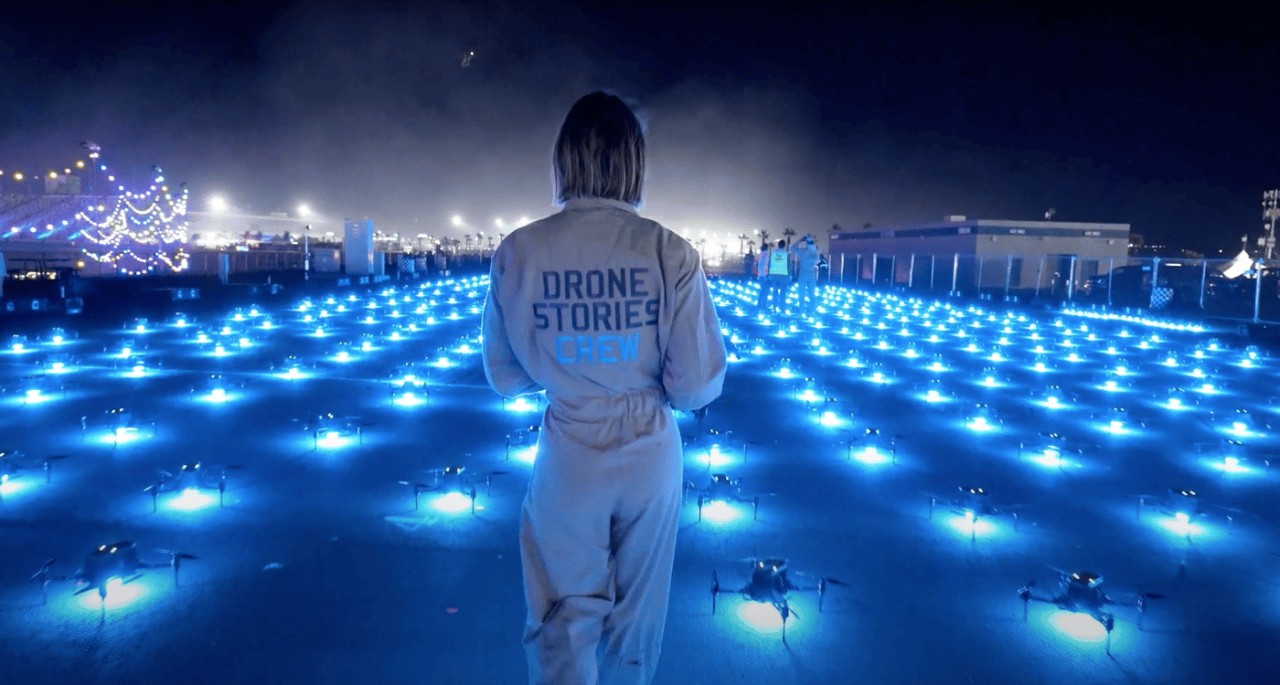Florida Drone Show: Witness breathtaking aerial displays illuminating Florida’s skies. This guide delves into the captivating world of Florida drone shows, exploring the regulations, popular locations, diverse show types, economic impact, safety protocols, and effective marketing strategies. From understanding the permitting process and FAA regulations to discovering the economic benefits and ensuring safe operations, we cover all aspects of this burgeoning industry.
We examine the unique challenges and advantages of hosting drone shows in various Florida locations, comparing the logistical considerations and showcasing successful past events. Different types of drone shows, ranging from artistic performances to commercial displays, are analyzed, highlighting the technical intricacies and cost implications. The guide also underscores the importance of safety and security, outlining best practices and emergency procedures to ensure a seamless and risk-free experience for both operators and spectators.
Florida’s drone shows are becoming increasingly popular, offering spectacular nighttime displays. While these shows utilize cutting-edge technology, the holiday season brings a different kind of technological marvel: tracking Santa’s journey via the norad santa tracker phone number. Both experiences offer a unique blend of excitement and wonder, though one involves miniature aircraft and the other, a much larger, more magical one.
Florida Drone Show Regulations and Permits
Navigating the regulatory landscape for drone shows in Florida requires understanding both federal and state-level guidelines. This section details the permitting process, FAA regulations, county-specific requirements, and provides a summary table for quick reference.
Permitting Process for Drone Shows in Florida
Obtaining permits for drone shows in Florida involves a multi-step process. First, operators must register with the Federal Aviation Administration (FAA) and obtain a Part 107 Remote Pilot Certificate. Next, they need to submit a detailed flight plan to the FAA, outlining the show’s specifics, including location, dates, times, and the number of drones. Simultaneously, local permits might be required from the relevant county or municipality, often involving applications to the local aviation authority or police department.
These local permits may include requirements for liability insurance, noise restrictions, and site-specific safety plans. The entire process can take several weeks, depending on the complexity of the show and the responsiveness of the relevant authorities.
FAA Regulations Impacting Florida Drone Shows
The FAA’s Part 107 regulations govern the operation of all unmanned aircraft systems (UAS), including those used in drone shows. Key regulations relevant to Florida drone shows include limitations on flight altitude, visual line-of-sight requirements, and operational restrictions near airports and other sensitive areas. Operators must adhere strictly to these regulations to avoid penalties. Specific considerations in Florida might include airspace restrictions around military bases or other significant installations.
Additionally, operators must ensure their drone operations do not interfere with manned aircraft operations.
Comparison of Permitting Requirements Across Florida Counties
Permitting requirements for drone shows vary across Florida’s diverse counties. Some counties have streamlined processes with readily available online applications, while others may require more extensive documentation and in-person meetings. For example, a county with a large tourist area might have more stringent regulations regarding noise levels and show durations, while a more rural county may have less stringent requirements.
Florida’s drone shows offer spectacular nighttime entertainment, showcasing impressive technological advancements in aerial displays. The recent news regarding the ukraine drone attack on russia highlights the increasingly significant role drones play in both entertainment and conflict. This stark contrast underscores the multifaceted nature of drone technology, and how its applications range from breathtaking spectacles in Florida to serious geopolitical events.
Operators must research the specific requirements of the county where they plan to hold their show.
Summary of Florida Drone Show Regulations
| Aspect | FAA Regulations | County/Local Regulations | Notes |
|---|---|---|---|
| Permitting | Part 107 Certificate, Flight Plan Submission | Varies by County (Noise, Insurance, Location) | Expect delays; apply early |
| Airspace Restrictions | Altitude limits, proximity to airports | Local airspace restrictions (military bases, etc.) | Thorough pre-flight checks are crucial |
| Safety Protocols | Visual Line of Sight (VLOS), emergency procedures | County-specific safety plans may be required | Prioritize safety; plan for contingencies |
| Insurance | Not explicitly required by FAA, but highly recommended | Often required by counties for liability | Secure adequate liability insurance |
Popular Locations for Florida Drone Shows
Several locations in Florida offer unique advantages for hosting drone shows. The choice depends on factors such as audience capacity, accessibility, and logistical considerations. Below, we highlight five popular locations, examining their suitability and past successes.
- Cocoa Beach Pier: Offers stunning oceanfront views and ample space for spectators. Successful shows have leveraged the beach setting for themed displays. Logistical advantages include existing infrastructure and high tourist foot traffic. Challenges include potential weather disruptions and securing necessary permits from the city.
- St. Augustine’s Historic District: The historical backdrop provides a unique aesthetic for drone shows, blending technology with heritage. Past shows have integrated historical elements into their choreography. Logistical challenges include navigating the city’s historic structures and obtaining permits from multiple agencies.
- Walt Disney World Resort (with necessary permissions): The vast and controlled environment offers unparalleled logistical advantages. However, securing permits and approvals would be extremely complex and require extensive coordination with Disney’s management. Successful shows could benefit greatly from Disney’s infrastructure and marketing capabilities.
- South Beach, Miami: The iconic beachfront provides a dynamic setting, and the large number of tourists creates a significant potential audience. However, securing permits and managing crowds present considerable logistical challenges. Past shows have incorporated the Art Deco architecture into their designs.
- Kennedy Space Center Visitor Complex (with necessary permissions): The historical significance of the location offers a compelling theme for drone shows, potentially incorporating space-themed displays. However, permits and logistical coordination would be extremely challenging due to the sensitive nature of the site.
Types of Drone Shows in Florida
Drone shows in Florida are evolving beyond simple light displays. This section categorizes different types of shows based on their themes, technical requirements, and overall complexity.
Themed Drone Shows
Themed shows often incorporate narratives, historical events, or popular culture references. For example, a show might depict the history of Florida, or a popular movie franchise. Technically, these shows require sophisticated choreography and potentially custom-designed drone formations. The cost and complexity increase with the intricacy of the narrative and the number of drones used.
Artistic Drone Shows
These shows focus on aesthetic appeal, utilizing light patterns and formations to create visually stunning displays. They may incorporate abstract designs or artistic interpretations of natural phenomena. Technically, these shows rely heavily on advanced software for precise choreography and lighting effects. The cost depends on the complexity of the designs and the quality of the drones and software.
Commercial Drone Shows
These shows are often integrated into larger events, such as corporate gatherings, festivals, or sporting events. They typically aim to enhance the overall experience and branding. Technically, these shows may involve a simpler choreography but require seamless integration with other event elements. The cost depends on the duration, complexity, and overall event scope.
Visual Comparison of Drone Show Types
Imagine three boxes representing the show types. The “Themed” box shows a complex, story-driven formation of drones, perhaps a dragon or a spaceship. The “Artistic” box displays abstract, flowing patterns of light and color. The “Commercial” box shows a more simple, yet elegant, logo or brand design created by the drones.
Economic Impact of Florida Drone Shows

Drone shows contribute significantly to Florida’s economy through tourism, employment, and related industries. This section explores the economic benefits and potential for future growth.
Economic Benefits for Florida Communities
Drone shows attract tourists, boosting local businesses such as hotels, restaurants, and entertainment venues. They also create jobs in areas like drone operation, software development, and event management. Furthermore, they can enhance a community’s image and attract future investment.
Revenue Generated by Past Drone Shows, Florida drone show
While precise revenue figures for individual shows are often confidential, successful shows have demonstrated significant revenue generation through ticket sales, sponsorships, and merchandise. For instance, a large-scale show at a popular tourist destination could generate hundreds of thousands of dollars in revenue.
Potential for Future Growth in the Florida Drone Show Industry
The Florida drone show industry has significant potential for growth. As technology advances and the cost of drones decreases, more events are likely to incorporate drone shows. Furthermore, the state’s tourism industry presents a significant market opportunity. The increasing sophistication of drone show software also allows for more complex and engaging displays.
Potential Economic Impact Across Different Sectors
| Sector | Economic Impact | Example | Growth Potential |
|---|---|---|---|
| Tourism | Increased visitor spending | Higher hotel occupancy rates during show events | High; aligns with Florida’s tourism focus |
| Employment | Job creation in various sectors | Drone pilots, technicians, event organizers | Moderate; dependent on show frequency |
| Local Businesses | Increased revenue for restaurants, shops, etc. | Higher sales during show events | High; directly related to tourist spending |
| Technology | Investment in drone technology and software | Development of new drone show platforms | High; driven by technological advancements |
Safety and Security Considerations for Florida Drone Shows
Safety and security are paramount for successful drone shows. This section addresses potential risks and Artikels essential protocols.
Potential Safety Risks Associated with Florida Drone Shows
Potential risks include drone malfunctions, adverse weather conditions (hurricanes, thunderstorms), and collisions. Operators must mitigate these risks through thorough pre-flight checks, contingency planning, and adherence to safety regulations.
Safety Protocols and Emergency Procedures for Drone Show Operators

Operators should have detailed emergency procedures in place, including protocols for drone malfunctions, loss of signal, and unexpected weather changes. They should also have a designated safety officer responsible for monitoring the show and coordinating emergency responses. Regular training and drills are crucial for ensuring operator proficiency.
Security Measures to Prevent Unauthorized Drone Activity

Security measures are necessary to prevent unauthorized drone activity during a show. This may involve using drone detection systems, establishing no-fly zones, and coordinating with local law enforcement. Clear communication with spectators regarding drone operation is also essential.
Best Practices for Ensuring Safety and Security
- Conduct thorough pre-flight inspections of all drones.
- Develop and rehearse detailed emergency procedures.
- Implement a robust communication system between operators and ground crew.
- Coordinate with local authorities to establish no-fly zones.
- Utilize drone detection systems to monitor for unauthorized activity.
- Maintain adequate insurance coverage.
Marketing and Promotion of Florida Drone Shows

Effective marketing is crucial for attracting audiences and ensuring the financial success of Florida drone shows. This section Artikels key strategies and provides examples.
Effective Marketing Strategies for Promoting Florida Drone Shows
Marketing strategies should leverage various channels, including social media, online advertising, public relations, and partnerships with local businesses and tourism agencies. High-quality video footage of past shows can be used to generate excitement and anticipation.
Examples of Successful Marketing Campaigns for Similar Events
Successful campaigns often incorporate stunning visuals, emphasize the unique aspects of the show (location, theme, technology), and target specific demographics through tailored messaging. Utilizing influencer marketing and leveraging partnerships with local media outlets can significantly amplify reach.
Use of Social Media and Other Digital Platforms for Promotion
Social media platforms, such as Instagram, Facebook, and TikTok, are highly effective for showcasing the visual appeal of drone shows. Targeted advertising on these platforms can reach specific demographics and geographic areas. Websites and email marketing can be used to provide detailed information and sell tickets.
Sample Marketing Plan Outlining Key Activities and Timelines
A sample marketing plan would include a timeline starting several months before the event. Initial activities would focus on building brand awareness and generating interest. As the event approaches, marketing efforts would shift to ticket sales and promoting attendance. Post-event activities would include sharing highlights and gathering feedback for future improvements. Specific channels and budget allocation would be detailed within the plan.
Florida drone shows represent a dynamic and rapidly growing sector, offering a unique blend of entertainment, technological innovation, and economic opportunity. By understanding the regulatory framework, logistical aspects, and safety considerations, Florida can continue to cultivate a thriving drone show industry, enriching communities and captivating audiences with spectacular aerial displays. The future is bright for this exciting form of entertainment, promising further growth and innovation in the years to come.
Question Bank
What is the typical cost to stage a Florida drone show?
Costs vary significantly depending on the show’s scale, duration, complexity, and the number of drones used. Expect a wide range, from several thousand to hundreds of thousands of dollars.
How long does the permitting process take in Florida?
Permitting timelines vary by county and the complexity of the show. Allow ample time, ideally several months, to ensure a smooth process.
What are the typical insurance requirements for Florida drone show operators?
Operators typically need comprehensive liability insurance to cover potential damages or injuries. Specific requirements can vary depending on the location and scale of the event.
Are there restrictions on the types of drones that can be used in Florida drone shows?
Florida’s drone shows offer spectacular nighttime entertainment, a far cry from the grim reality of conflict. The recent drone attacks, such as the one detailed in this report on the ukraine drone attack on russia , highlight the stark contrast between recreational and military uses of this technology. Ultimately, however, both showcase the impressive capabilities of drones, from breathtaking displays to devastating attacks.
Yes, FAA regulations govern drone specifications and operation. Specific requirements may also be included in local permits. Operators should ensure compliance with all applicable regulations.
